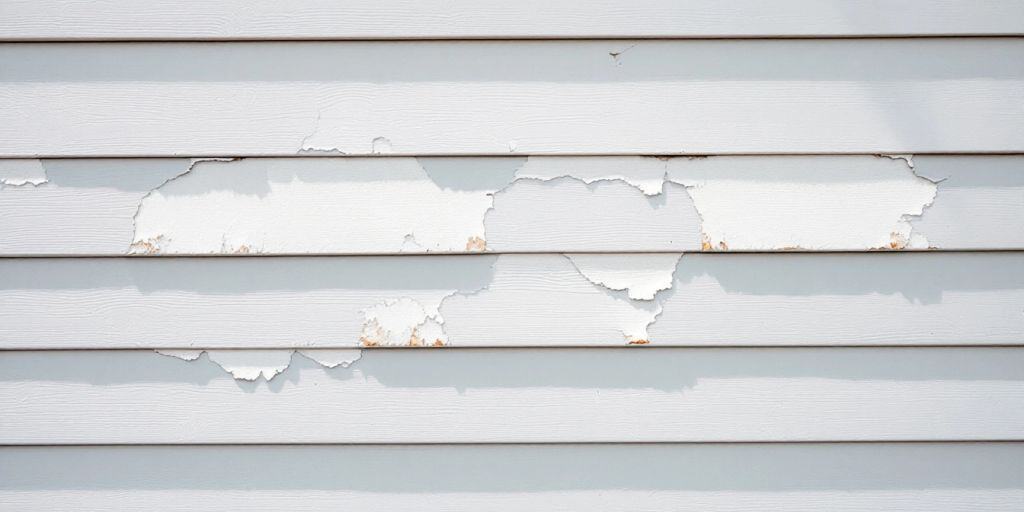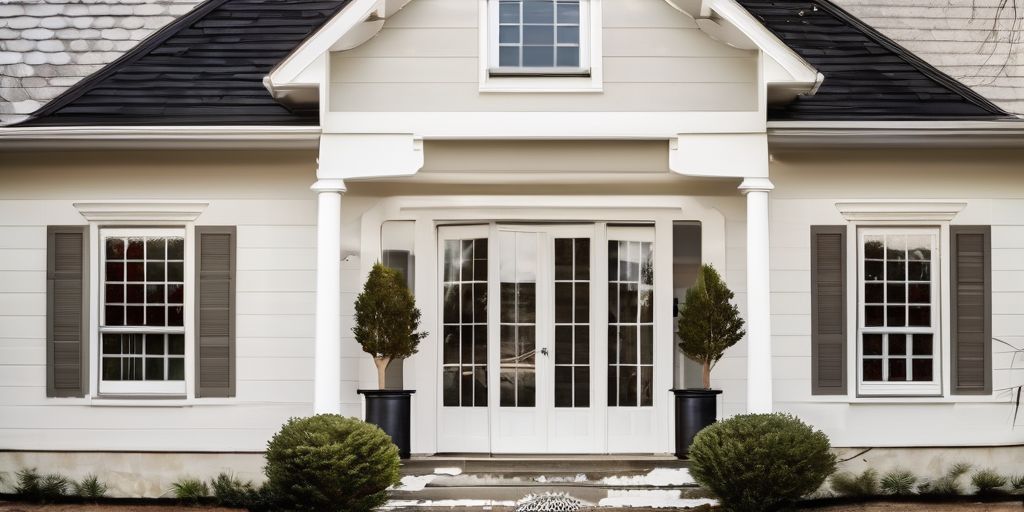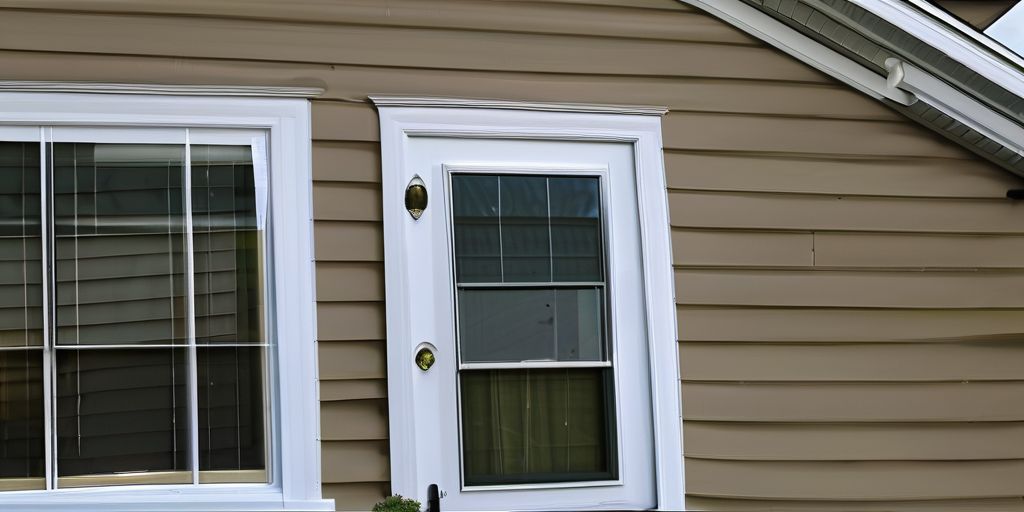Vinyl siding is a popular choice for homes in Mississauga because it is durable and easy to care for. However, peeling paint can be a common issue that affects both the look and protection of your home. In this article, we will look at why paint peels on vinyl siding, how to prevent it, effective repair methods, when to call in professionals, and how to keep your siding in good shape for years to come.
Key Takeaways
- Properly prepare the surface to avoid peeling paint.
- Choose high-quality paint made for vinyl siding.
- Regular cleaning and maintenance can stop peeling from getting worse.
- Know when to hire a professional for the best results.
- Understand the costs involved in DIY versus professional repairs.
Understanding the Causes of Peeling Paint on Vinyl Siding
Peeling paint on vinyl siding can be a frustrating issue for homeowners. Understanding the reasons behind this problem is essential for maintaining the beauty and integrity of your home. Here are some key factors that contribute to peeling paint:
Environmental Factors Contributing to Peeling Paint
- Moisture Damage: Excess humidity or water can seep into the siding, causing the paint to bubble and peel.
- Temperature Fluctuations: Rapid changes between hot and cold can make the vinyl expand and contract, leading to cracks.
- Direct Sunlight: Prolonged exposure to sunlight can degrade the paint, especially if it’s not UV-resistant.
Common Mistakes in Surface Preparation
- Inadequate Cleaning: Failing to clean the surface properly can prevent paint from adhering well.
- Skipping Primer: Not using a primer designed for vinyl can lead to poor adhesion and peeling.
- Rushing the Process: Taking shortcuts during preparation can result in a less durable finish.
Impact of Low-Quality Paint on Vinyl Siding
- Incompatibility: Using paint not formulated for vinyl can lead to peeling.
- Brittleness: Low-quality paints may become brittle over time, causing cracks and peeling.
- Short Lifespan: Cheaper paints often don’t withstand the elements, leading to premature deterioration.
Addressing peeling paint quickly is crucial to prevent further damage to your siding and home structure. In areas like Mississauga, where humidity levels can be high, it’s especially important to monitor your siding regularly.
Preventive Measures to Avoid Peeling Paint
Choosing the Right Paint and Primer
- Invest in high-quality paint: Quality paint bonds better to surfaces, reducing the chance of peeling.
- Use a primer: A good primer helps the paint stick and lasts longer.
- Select paint suitable for vinyl siding: Not all paints work well on vinyl; choose one made for it.
Proper Surface Cleaning Techniques
- Clean the surface: Remove dirt, mildew, and chalking before painting.
- Sand the surface: Lightly sand to create a smooth base for the paint.
- Repair any damage: Check for issues like warping or rot, especially in older homes, and fix them before painting.
Seasonal Maintenance Tips for Vinyl Siding
- Inspect regularly: Look for signs of peeling or damage, especially after harsh weather.
- Touch up as needed: Fix small areas of peeling quickly to prevent bigger problems.
- Maintain proper ventilation: Good airflow helps reduce humidity, which can cause paint to peel.
Taking these preventive steps can save you time and money in the long run. Regular maintenance is key to keeping your vinyl siding looking fresh and beautiful, especially in a climate like Mississauga’s, where weather can be unpredictable.
By following these guidelines, you can help ensure that your vinyl siding remains in great condition for years to come.
Effective Repair Techniques for Peeling Paint
Step-by-Step Guide to Repainting Vinyl Siding
Repairing peeling paint on vinyl siding can seem overwhelming, but it’s manageable with the right steps. Here’s a simple guide to help you through the process:
- Identify the Problem: Check for any underlying issues like water damage or poor ventilation that might be causing the peeling.
- Prepare the Area: Protect your surroundings by covering furniture and the ground with drop cloths.
- Remove Peeling Paint: Use a putty knife or scraper to gently take off the loose paint. Be careful not to damage the siding underneath.
- Sand the Surface: Smooth out the area with sandpaper to ensure the new paint sticks well. Start with coarse grit and finish with fine grit.
- Clean the Area: Wipe down the surface with a damp cloth to remove dust and debris.
- Apply Primer: A good primer is essential for a strong bond. Let it dry completely before painting.
- Paint the Area: Apply at least two coats of paint, allowing each coat to dry before adding the next.
Essential Tools and Materials for Repair
To effectively repair peeling paint, gather the following tools and materials:
- Putty knife or scraper
- Sandpaper (coarse and fine grit)
- Drop cloths
- Primer
- High-quality paint suitable for vinyl siding
- Damp cloth for cleaning
Common Pitfalls to Avoid During Repair
When repairing peeling paint, keep these common mistakes in mind:
- Skipping Surface Preparation: Failing to clean and sand the surface can lead to poor adhesion.
- Using Low-Quality Paint: Cheap paint may not adhere well and can peel again quickly.
- Ignoring Weather Conditions: Ensure you paint on a dry day to avoid moisture issues.
Remember, taking the time to properly prepare and repair your vinyl siding can save you from future headaches. Regular maintenance is key to keeping your home looking great, especially in areas like Mississauga where weather can be unpredictable.
By following these steps, you can effectively tackle peeling paint and enhance the appearance of your home’s exterior.
When to Seek Professional Help for Peeling Paint Issues
Deciding when to call in an exterior painter for peeling paint on vinyl siding is important for keeping your home looking its best. Here are some situations where getting professional help is a good idea:
Signs That You Need a Professional Painter
- Persistent peeling: If the paint keeps peeling even after you’ve tried to fix it, it’s time to call a pro.
- Large areas of damage: When the peeling affects big sections, it may require more expertise and tools than you have.
- Safety concerns: If the work involves heights or hard-to-reach spots, it’s safer to let a professional handle it.
Benefits of Hiring Professional Services
- Expert assessment: Professionals can evaluate the situation and suggest the best solutions.
- Quality work: They have the right tools and experience to ensure the job is done correctly.
- Time-saving: Hiring a pro can save you time and effort, allowing you to focus on other things.
How to Choose the Right Painting Contractor
- Check reviews: Look for feedback from previous customers to gauge their reliability.
- Ask for quotes: Get estimates from multiple contractors to compare prices.
- Verify credentials: Ensure they are licensed and insured to protect yourself from any issues.
Remember, getting professional help can save you from making costly mistakes and ensure your home stays in great shape. Regular inspections, like those suggested for homes near the beautiful Credit River in Mississauga, can help catch problems early and keep your siding looking fresh!
Cost Considerations for Peeling Paint Solutions
When dealing with peeling paint on vinyl siding, understanding the costs involved is essential. Budgeting wisely can save you from unexpected expenses. Here are some key factors to consider:
Estimating Material and Labor Costs
- Material Costs: This includes the price of paint, primer, and any other supplies needed for the job.
- Labor Costs: If you decide to hire professionals, their rates can vary based on experience and the complexity of the work.
- Size of the Area: Larger areas will require more materials and time, impacting overall costs.
| Cost Factor | Estimated Range |
|---|---|
| Material Costs | $100 – $500 |
| Labor Costs | $200 – $800 |
| Total Estimated Cost | $300 – $1300 |
Budgeting for Unexpected Expenses
- Always set aside a contingency fund for any unforeseen issues that may arise during the project.
- Consider potential costs for repairs if underlying problems are discovered, such as moisture damage.
- Investing in quality materials can save money in the long run by reducing the need for frequent repairs.
Comparing DIY vs. Professional Repair Costs
- DIY Approach: While it may seem cost-effective, consider the time and effort involved. You may need to purchase tools and materials.
- Professional Services: Hiring experts can ensure the job is done correctly, potentially saving you time and future costs.
Remember, cutting corners to save money can lead to poor results that may require more frequent touch-ups or full repaints, negating any initial savings.
By understanding these cost considerations, homeowners in Mississauga can make informed decisions about how to tackle peeling paint issues effectively.
Long-Term Maintenance for Vinyl Siding
Maintaining your vinyl siding is essential for keeping it looking great and lasting longer. Regular upkeep can prevent bigger problems down the road. Here are some key areas to focus on:
Regular Inspection and Cleaning Routines
- Inspect your siding regularly for signs of peeling, cracking, or fading.
- Clean the siding annually using a soft brush and a mild detergent to prevent dirt buildup.
- Look for signs of mold or mildew and address them promptly.
Protective Coatings and Sealants
- Consider applying a protective sealant to the siding. This can help guard against the elements and extend the paint’s life.
- The best time to perform maintenance is during optimal weather conditions, avoiding extreme temperatures or direct sunlight.
Tips for Extending the Life of Your Paint Job
- Touch up any areas where paint has chipped or peeled to protect the underlying material.
- Maintain proper ventilation in damp areas of your home to reduce humidity and decrease condensation.
- Conduct seasonal inspections, especially after harsh weather conditions.
By adhering to a regular maintenance schedule, you can avoid the need for more extensive repairs down the line and keep your siding looking fresh and new.
For those living in Mississauga, the local climate can impact your siding. The proximity to Lake Ontario may lead to more wear and tear, so it’s wise to be proactive in your maintenance efforts.
Impact of Peeling Paint on Home Value and Aesthetics
Peeling paint on vinyl siding can have a significant effect on both the appearance and value of your home. Addressing these issues promptly is crucial to maintaining your property’s appeal and worth.
Curb Appeal and Property Value
- Decreased Curb Appeal: Peeling paint can make your home look neglected, which can deter potential buyers or visitors.
- Reduced Property Value: Homes with visible wear and tear, like peeling paint, often sell for less than well-maintained properties.
- First Impressions Matter: A well-kept exterior can enhance the overall impression of your home, especially in neighborhoods near landmarks like the Credit River.
Protecting Your Home from Weather Damage
- Compromised Protection: The primary role of siding is to protect your home from the elements. Peeling paint exposes the siding, making it vulnerable to moisture and pests.
- Long-Term Damage: If left untreated, peeling paint can lead to more severe issues, such as rot or mold, which can be costly to repair.
- Increased Maintenance Costs: Regular upkeep is essential to prevent further deterioration, which can add to your expenses over time.
Alternatives to Vinyl Siding for Better Durability
- Consider Modern Options: Homeowners may explore alternatives like metal siding, known for its durability and resistance to weather conditions.
- Proper Installation is Key: Regardless of the material, ensuring proper installation and maintenance is vital for preserving your home’s exterior condition.
Keeping your home’s exterior in good shape is not just about aesthetics; it’s about protecting your investment and ensuring its longevity.
Peeling paint can really hurt your home’s value and how it looks. If your house has faded or chipped paint, it might turn away potential buyers and make your home less appealing. Don’t let peeling paint drag down your property! Visit our website today to learn how we can help you refresh your home’s exterior and boost its curb appeal!
Conclusion
In summary, fixing peeling paint on vinyl siding in Mississauga involves careful planning, using good materials, and keeping up with maintenance. By following the tips in this article, homeowners can stop and repair peeling paint, helping their vinyl siding look great for many years. Remember, taking a little time now can save you both time and money later. If you run into any problems or have questions, don’t hesitate to ask for professional help. Your home deserves the best care, and with the right steps, you can enjoy a beautiful and well-kept exterior for years.
Frequently Asked Questions
How can I stop peeling paint on my vinyl siding?
You can avoid peeling paint by preparing the surface well, using the right kind of paint, and keeping up with regular maintenance.
What usually causes paint to peel on vinyl siding?
Common reasons include not preparing the surface correctly, using cheap paint, and being exposed to harsh weather.
How does peeling paint affect my home’s look?
Peeling paint can make your home look less attractive, lower its curb appeal, and cause more damage if not fixed.
What signs should I look for that indicate peeling paint?
Look for flaking or bubbling paint, discoloration, and a rough texture on your siding.
When is it time to call a professional about peeling paint?
You should consider calling a professional if the peeling is widespread, if you lack the right tools or skills, or if you want a perfect finish.
How much does it usually cost to hire a professional for peeling paint issues?
Costs can vary based on how much damage there is, the size of the job, and the rates of different painting services. It’s best to get quotes from several professionals.




